Seaborne Oil a Lifeline as German, Polish Refiners Swerve Russian Supply
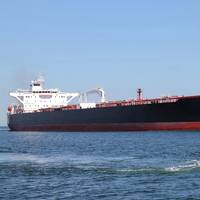
Seaborne oil has thrown a lifeline to refiners in eastern Germany and Poland, with non-Russian deliveries into the Polish port of Gdansk hitting at least seven-year highs this month as they switch away from Russian supply.Imports booked for May into Gdansk from Egypt, the United States, Norway, Britain and West Africa had hit 8.4 million barrels by May 16, their highest level according to Refinitiv Eikon ship tracking data that goes back to 2015.At the same time, Russian crude booked for May into Gdansk and the port of Rostock stood at 700…
China Crude Processing Spikes to All-time High
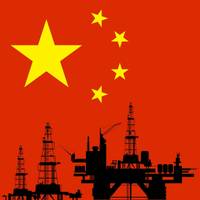
Chinese refinery crude oil throughput has reached its highest level ever, with total processed volumes up 12% in the first five months of this year compared to 2020, and up 10.9% from the same period in 2019. In total 292.7m tonnes have been processed so far this year according to the National Bureau of Statistics China.Despite the 12.0% growth in crude oil processing, Chinese crude oil supply, which includes imports and domestic production, has only grown by 2.3% in the first five months of this year.
U.S. Crude Oil Exports: When 'Less is More'
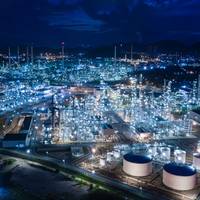
Longer sailing distances cushion fall in US crude oil exportsTon mile demand generated by US crude oil exports has fallen by 9.7% in the first two months of 2021 compared with the start of 2020. The fall could however have been much worse; In volume terms, seaborne crude oil exports have fallen by 18.8%, to 20.9m tonnes, a 4.8m tonnes decline compared with last year, according to data from the US Census Bureau.While seaborne crude oil exports to all regions have fallen, those to Asia are among the least affected, down just 1.0%, or equivalent to one Aframax load (101,088 tonnes).
Alberta Oil Shipped Through Panama Canal to Atlantic Canada
On July 20, the tanker Cabo de Hornos delivered an estimated 450,000 barrels of crude oil to the Irving Oil refinery’s Canaport storage facilities in Saint John, N.B.What made Cabo de Hornos’s delivery different was that it was the first time crude oil had arrived in Saint John by ship from Alberta. It came via the Trans Mountain pipeline to the Westbridge Marine Terminal in Burnaby, B.C., and then through the Panama Canal.By the end of April next year, a second tanker will arrive at Canaport carrying 350,000 to one million barrels of Western Canadian crude oil. In this case, the oil will have come via pipeline from Alberta to a crude oil exporting terminal in Texas or Louisiana.For most of the Saint John refinery’s 50 years of operation…
Tanker Rates Fall, but Storage Demand Stays Firm

After a frantic week that sent crude oil freight rates to record highs amid a bookings bonanza to ship Saudi oil to the world, rates are now easing as charterers balk at the nosebleed charges and await Saudi volume plans for April, shipping sources said."Sentiment remained softer today," said one ship broker while pointing to another day of limited chartering activity.At least nine very large crude oil carrier (VLCC) provisional charters failed this week along with another five for Suezmax tankers…
Mideast Tensions Create Insurance Headache for Tanker Owners
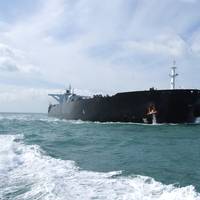
Even as the United States and Iran appear to signal a keenness to avoid further conflict, oil and gas shipowners are bracing to pay a price for the war of words that culminated in rocket strikes in Iraq over the last week - higher insurance bills.According to industry sources, payments known as war risk premiums for tankers shuttling through the Strait of Hormuz could rise significantly, adding hundreds of thousands of dollars to shipping costs in some cases that will ultimately…
U.S. Sanctions Bite; Traders Shun 300 Tankers
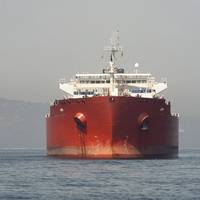
Nearly 300 oil tankers globally have been placed off limits as companies fear violating U.S. sanctions against Iran and Venezuela, driving freight rates to new highs, industry sources said.The move has taken roughly 3% of the global oil tanker fleet out of the market, according to industry sources and data on Refinitiv Eikon, sending rates soaring to secure tankers to ship oil, particularly to Asia."Freight rates are going through the roof and people are getting very nervous with the cost of shipping…
Japan Won't Join US-Led Maritime Coalition in Gulf
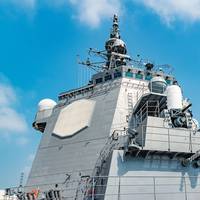
Japan will not join a U.S.-led security mission to protect merchant vessels passing through key Middle Eastern waterways, but will consider deploying its naval force independently, the Yomiuri newspaper reported on Tuesday.Though the United States is Japan's most important ally, Tokyo has fostered economic ties with Iran, and Japanese firms had been major buyers of Iranian oil until U.S. sanctions forced them to find other suppliers.Citing unidentified government sources, the…
McQuilling Mid-Year Tanker Market Outlook
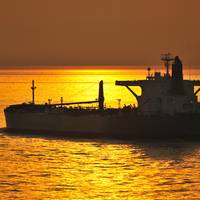
McQuilling Services Announces the Release of the 2019 Mid-Year Tanker Market Outlook Update.The Mid-Year Tanker Market Outlook Update provides an outlook on the global tanker market in the context of global economic growth and oil fundamentals influencing tanker demand and vessel supply. The outlook includes a view on future asset values, time charter rates, market freight rates and TCE revenues for 24 major tanker trades and four triangulated routes across eight vessel segments for the second half of 2019 through the remaining four years of the forecast period 2019-2023.
Frontline Sees Opportunity in Tanker Market
So far in 2019, 41 VLCCs have been added to the global fleet compared to three vessel demolitions, said the world's largest oil tanker shipping company Frontline Ltd.An additional 33 VLCCs are scheduled to be delivered in 2019 with 43 more to follow in 2020 before the order-book declines sharply.It is important to note that both the VLCC and Suezmax tanker order book as a percentage of the total fleet are at the lowest levels seen in over 20 years.The order book has been the biggest challenge for the tanker markets over the last 24 months. The removal of this overhang is positive, but a surge in new orders can of course quickly change this.Despite continued deliveries of newbuilding vessels in the short term…
US Oil Production Up, Needs More Pipelines
The rising domestic crude oil production in the United States has created a need for more pipeline capacity, revealed the US Energy Information Administration (EIA).EIA recently launched a new liquids pipeline projects database that tracks more than 200 crude oil, hydrocarbon gas liquids (HGL), and petroleum products pipeline projects."Rising domestic crude oil production has led to several changes in Gulf Coast crude oil supply and demand patterns, creating a need for more pipeline capacity," it pointed out.Crude oil pipeline capacity additions originating in the Gulf Coast region represent most of the scheduled pipeline capacity growth over the next few years.
Tanker Rates Firming Up: Frontline
The middle of the first quarter in 2019 saw tanker rates firming significantly, driven mainly by an increase in US exports, said Frontline Ltd. is the world's largest oil tanker shipping company.The tanker market pulled back in January due to OPEC production cuts and a high level of newbuilding deliveries after a strong end to 2018, it said.The market then came off primarily due to extended refinery maintenance in preparations for IMO 2020 and both new and persistent supply disruptions.Atlantic refinery maintenance is currently coming to an end and East of Suez refinery maintenance is coming off of peak levels.Crude oil demand forecasts remain healthy and largely unchanged since the start of the year.
Frontline Predicts Tanker Market Volatility
The tanker market improved significantly in the fourth quarter ended December 31, 2018 driven by continued strong oil demand, said Bermuda-based tanker shipping company Frontline Ltd.According to the world's largest oil tanker shipping company, crude inventory draws reversed in the quarter, after having fallen below five-year levels and reduced the demand for crude tankers in the process.There is a historical correlation between inventory cycles and tanker rates, it said. Crude oil supply / demand forecasts from the IEA imply that inventories will remain relatively stable over the next several quarters, which in turn should create a…
Crude Tanker Spot Rates Soften
Crude tanker spot rates improved significantly during the fourth quarter of 2018, spurred by both winter market seasonality and positive underlying supply and demand fundamentals.According to a stock exchange announcement from Teekay Tankers, in the fourth quarter of 2018, OPEC crude oil production rose to 32.4 million barrels per day (mb/d), the highest level since July 2017 and up from 31.4 mb/d earlier in 2018.Most of this increase came from the Middle East, where higher production levels more than offset lower output from Venezuela and Iran. Russian oil production reached a record high 11.5 mb/d by the end of 2018, which was positive for mid-size tanker demand in the Mediterranean / Black Sea and Baltic Sea regions."Rising U.S. exports also supported tanker demand, with U.S.
Saudi Aramco to Invest in China
Saudi Aramco recently signed an MoU with Chinese Zhejiang provincial government during the 2nd International Petroleum and Natural Gas Enterprises Conference (IPEC), to acquire a share of Zhejiang Petrochemical’s new refinery project.Abdulaziz Al Judaimi, Sr. VP Downstream, said: "We are exploring opportunities for new refining and petrochemicals facilities, making further investments in China. Saudi Aramco has recently signed a crude oil supply agreement with Zhejiang Petrochemical (Rongsheng). This increase in customer base is due to our continuous focus and attention to the Chinese market. We are also a major JV partner in a growing portfolio of refining and petrochemical assets in China."Saudi Aramco plays an important part in China’s energy security.
Yanbu South Terminal Boost Export Capacity
The oil giant Saudi Aramco has competed the rehabilitation and upgrade project of the Yanbu South Terminal (YST), which adds an extra three million barrels per day of crude oil to its West Coast export capacity.Yanbu South Terminal, which is located south of Yanbu City on the West Coast of Saudi Arabia, consists of a tank farm and offshore facilities to receive, store and load Arab Light (AL) and Arab Super Light (ASL) crude oil.The facility’s integration with the existing crude oil supply network adds 3 million barrels per day to Saudi Aramco’s export capacity through the West Coast, thereby reinforcing the reputation of Saudi Aramco…
Euronav: VLCC Order Book Expands
The challenging freight market during the third quarter came despite some encouraging signs with active scrapping of vessels returning (nine VLCCs scrapped plus one removed from fleet for FPSO project; six Suezmax scrapped during the third quarter) incentivized by a steel price at near three-year highs, says Euronav NV. This was supported by continued upgrades to crude oil demand with the IEA raising its forecast for 2017 from 1.2 mbpd to 1.6 mbpd over the course of the third quarter and U.S. crude exports again making further progress to record on average 933k bpd for the third quarter. However, the VLCC order book continued to expand with 13 new orders placed during the third quarter largely outpacing this re-emergence of sector discipline in scrapping.
VLCC Segment Shows Modest Growth
In the Very Large Crude Carriers (VLCC) segment, which showed modest growth in overall volume from 2014 to 2015, the main changes were concentrated in the eastern hemisphere, says a report by Tanker Research & Consulting department at Poten & Partners. In the Middle East, there was a significant increase in movements from the Arabian Gulf to the Red Sea. Reported VLCC fixtures increased almost fivefold from 12 in 2014 to 56 in 2015, mainly as a result of the startup of the 400,000 barrels per day (bpd) Yanbu refinery at the end of 2014, which is located on Saudi Arabia’s Red Sea coast. The refinery processes heavy crude from the Manifa oilfield, located offshore Saudi Arabia in the Arabian Gulf and VLCCs shuttle the crude around the Arabian Peninsula.
Teekay Tankers Misses 4Q Profit forecasts
Teekay Tankers Ltd. reported adjusted net income attributable to its shareholders of $48.5 million, or $0.31 per share, for the quarter ended December 31, 2015, compared to $18.6 million, or $0.21 per share, for the same period in the prior year. The results fell short of Wall Street expectations. The average estimate of seven analysts surveyed by Zacks Investment Research was for earnings of 42 cents per share. The increase is primarily due to stronger spot tanker rates in the fourth quarter of 2015 compared to the same period in the prior year and an increase in fleet size related to the acquisition of 17 modern, mid-size tankers during 2015 and the expansion of the Company's chartered-in tanker portfolio in 2014 and 2015.
Suezmax Tanker Market on the Rise Yet Again
Suezmax tankers are looking good for a strong 2015 year, before posting a mild downside during 2016, but are poised to accelerate yet again in 2017 on rising deliveries, said shipbroker Charles R. Weber in its latest weekly report (Ref. “Suezmax earnings continued to experience surprising strength during the first quarter of the year with an average of ~$46,951/day exceeding our early-January projection by 15%. Through the full year, we have raised our projected average by 6% to ~$37,200/day. During 2016 and 2017 we project averages of $35,375/day and $31,000/day, respectively”, said the shipbroker. Suezmax earnings have strengthened in recent months…
BIMCO: Tanker Market is Full of Surprises
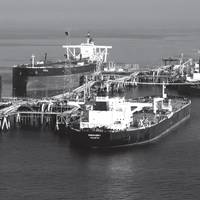
Some time ago, BIMCO expected the first signs of a solid recovery in the oil tanker industry to appear in the product tanker market. However, like other soon-to-arrive recoveries, the waiting time tends to increase as we approach the expected tipping point. This time around, global refinery throughput started the year strongly but entered a still running soft patch in May, high volumes but shorter hauls out of the U.S. Gulf, and the steady inflow of new ships were part of the cocktail that prevented freight rates from taking off big time.
Iran Sanction Proposal Targets Oil Companies, Tanker Fleet
A U.S. proposal to sanction Iran’s state-owned oil company and its main tanker fleet may ensnare any person or business in the world involved in purchasing or shipping Iranian oil, according to a report from Bloomberg. Pressure is mounting on Iran’s nuclear program, as the prospect of an attack from Israel grows beyond rhetoric. In turn, the pressure is rising to force Iran to back down. The Senate Banking Committee unanimously adopted a measure Feb. 2 to compel the administration to investigate links between Iran’s crude-oil supply chain and its powerful Islamic Revolutionary Guard Corps, an elite military unit that the U.S. has sanctioned for weapons proliferation, terrorism support and human-rights abuses. The move would essentially “black list” Iranian oil.
Not All Contangos are Created Equal
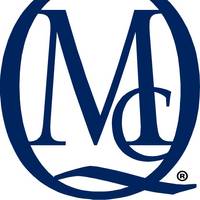
After the collapse of the global financial system in 2008, crude oil forward curves moved into steep contango. Fortunes were made in storage asset plays in 2009-2010, which is likely the reason that so much attention is being devoted to the topic today; however, the contango is inherently different today than it was after The Great Recession. As the U.S. energy revolution continues to develop, global crude oil supply and demand dynamics have begun to evolve. Improvements to hydraulic fracturing processes have helped the U.S. become the world’s largest crude oil producer.





